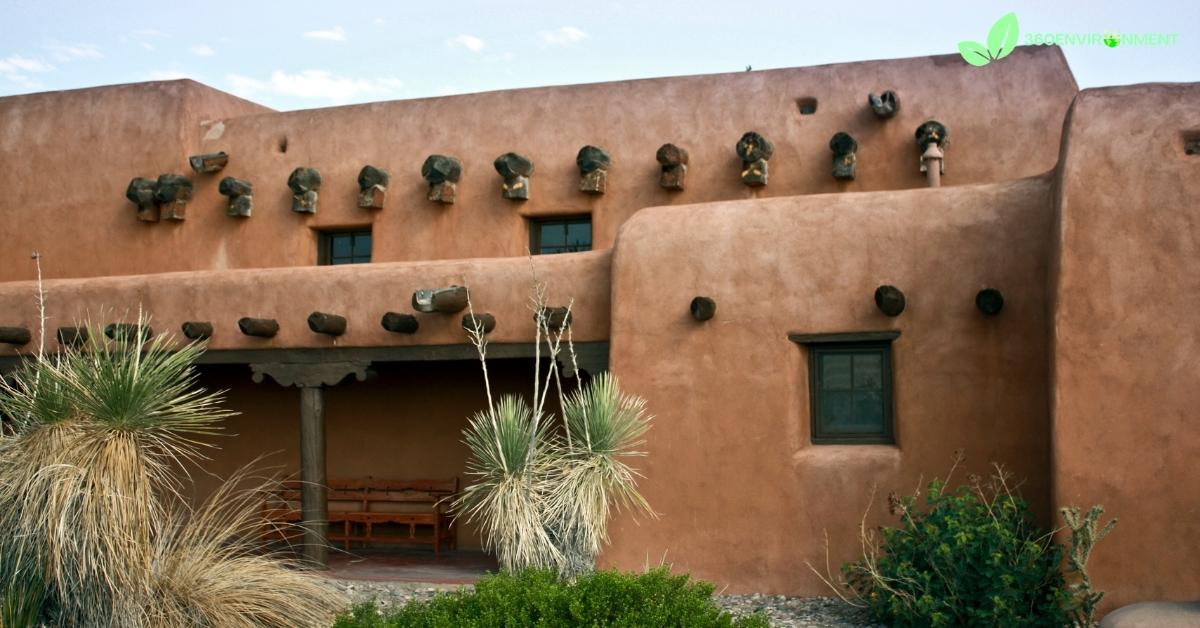Adobe clay is one of the oldest and most environmentally sustainable building materials known to humanity. Used for thousands of years in various parts of the world, adobe structures are still standing today, demonstrating their durability and strength. This building material has been used in deserts, arid climates, and regions where traditional wood and stone resources are scarce, making it particularly important for ancient civilizations as well as modern eco-conscious builders.
As interest in sustainable architecture grows, adobe clay has regained popularity due to its minimal environmental impact, natural insulation properties, and its ability to be produced locally without relying on industrialized processes. This article explores the environmental benefits, production process, and applications of adobe clay in modern architecture, as well as the challenges that come with using this ancient material in the 21st century.
1. What is Adobe Clay?
Adobe clay refers to a mixture of clay, sand, and water, sometimes reinforced with organic materials like straw or grasses. The term “adobe” itself is derived from the Arabic word “al-tob,” which means brick. This simple mixture is formed into bricks or shaped into walls and structures, which are then dried in the sun. Adobe bricks or walls harden over time, creating solid, durable structures that can withstand the test of time.
Adobe clay is a natural building material that relies on readily available resources from the earth. Unlike cement or concrete, which require high-energy industrial processes to produce, adobe can be sourced, mixed, and shaped on-site, reducing transportation emissions and industrial pollution.
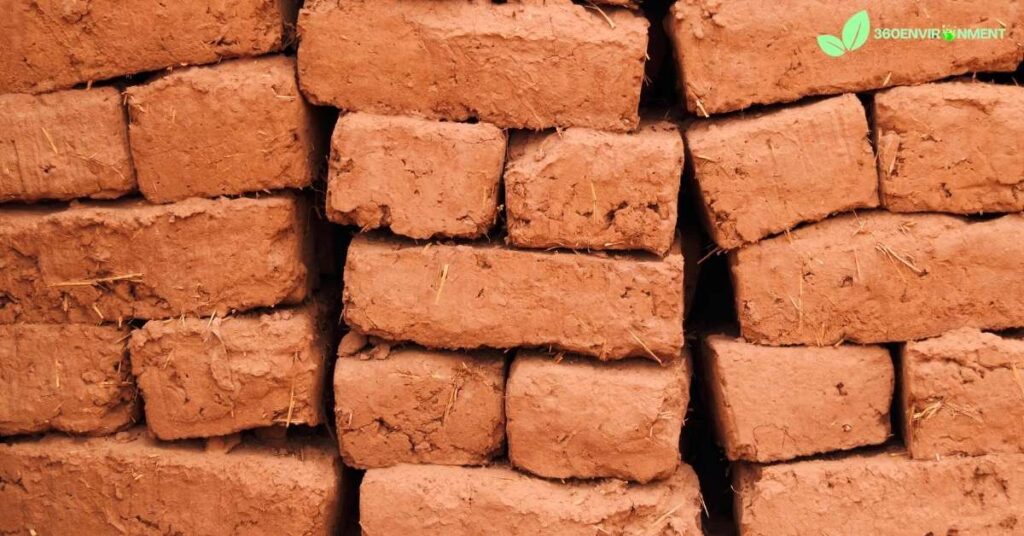
1.1. Composition of Adobe Clay
The composition of adobe clay varies depending on the local availability of materials. However, the typical adobe mix contains:
- Clay: Acts as the binding agent in the adobe mix. Clay provides the stickiness and cohesion necessary to hold the mixture together when wet.
- Sand: Sand is added to the mix to prevent cracking during the drying process. It helps create a stable structure by reducing the shrinkage of clay as it dries.
- Water: Water binds the materials together temporarily, allowing the mixture to be shaped before drying.
- Organic Material (Straw, Grass, or Manure): Organic fibers are often added to reinforce the mixture. These materials act like natural rebar, increasing the tensile strength of the adobe bricks or walls and preventing cracks as the structure dries and ages.
1.2. History and Global Use
Adobe clay has been used for thousands of years, dating back to ancient civilizations like the Egyptians, Mesopotamians, and the people of the Americas. The practice of adobe construction spread to various parts of the world, including the southwestern United States, North Africa, the Middle East, and parts of Asia.
Some of the most famous ancient structures built with adobe clay include the Great Mosque of Djenné in Mali and the pueblos of the Southwestern Native American tribes. Even today, adobe remains a popular building material in regions with dry climates, where rainfall is minimal, and the material can naturally cure and maintain its strength.
2. Environmental Benefits of Adobe Clay
One of the most compelling reasons to consider adobe clay in modern construction is its environmental benefits. Unlike many other building materials, adobe is naturally abundant, requires minimal processing, and is biodegradable, making it an eco-friendly option for sustainable construction projects.
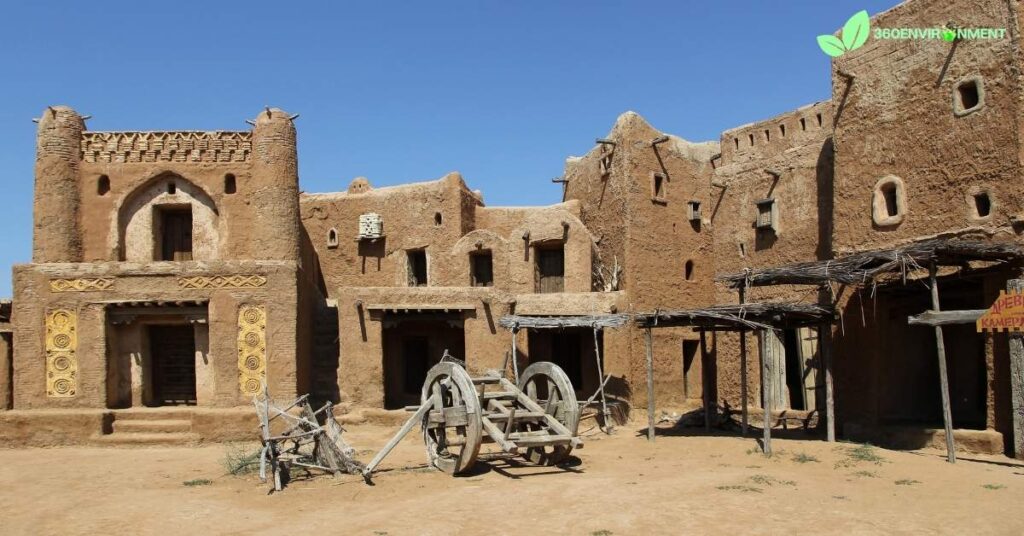
2.1. Low Carbon Footprint
Adobe clay is a low-energy, low-emission material. The primary ingredients—clay, sand, and water—are usually sourced locally, reducing the need for long-distance transportation, which can significantly lower the carbon footprint of construction. Additionally, adobe does not require the firing process that is needed for bricks or the chemical reactions involved in cement production, both of which release significant amounts of carbon dioxide into the atmosphere.
Adobe bricks are simply air-dried, using the sun as a natural energy source. This process requires no fossil fuels, making adobe one of the greenest building materials available. In regions with abundant sunshine, the drying process is highly efficient and can be completed in just a few days.
2.2. Energy Efficiency and Thermal Mass
Adobe clay buildings are known for their excellent thermal mass properties. Thermal mass refers to a material’s ability to absorb, store, and release heat. Adobe walls are thick, allowing them to retain heat during the day and release it slowly during the cooler nights. This natural insulation helps maintain a comfortable indoor temperature, reducing the need for artificial heating and cooling systems.
In hot climates, adobe homes remain cool during the day, while in cooler regions, they help retain warmth. This passive temperature regulation can significantly reduce energy consumption in homes, leading to lower electricity and heating bills, as well as a reduction in greenhouse gas emissions associated with energy use.
2.3. Biodegradability and Recyclability
One of the key environmental advantages of adobe clay is its biodegradability. Unlike synthetic materials like plastic or metal, adobe can naturally break down over time without causing environmental harm. If an adobe building is dismantled or abandoned, the materials can be returned to the earth, where they will naturally degrade.
Furthermore, adobe can be recycled. Old or damaged adobe bricks can be broken down and mixed with fresh clay and sand to create new bricks, reducing waste and the demand for new materials. This closed-loop system aligns with the principles of a circular economy, where materials are reused and repurposed rather than discarded.
2.4. Minimal Impact on Natural Resources
Adobe clay construction has a minimal impact on natural resources. Unlike conventional building materials such as concrete, steel, or wood, adobe does not rely on deforestation, mining, or energy-intensive manufacturing. Clay and sand are abundant and renewable resources, and the water used in the mixture can often be sourced from local supplies.
Additionally, the use of organic materials like straw or grass not only reinforces the structure but also promotes the use of renewable resources that can be easily replenished.
3. The Process of Making Adobe Bricks
The process of making adobe bricks is relatively simple, but it requires careful attention to detail to ensure the durability and strength of the final product. Traditional methods have been passed down through generations, though modern techniques have also been developed to enhance the quality and longevity of adobe structures.
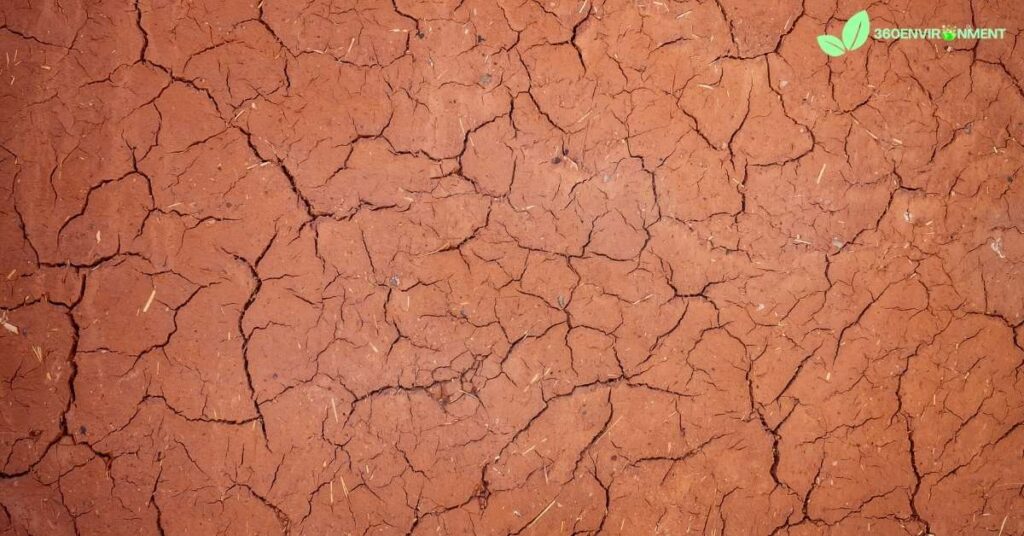
3.1. Preparing the Adobe Mix
The first step in creating adobe bricks is to gather the raw materials—clay, sand, water, and organic material. The ideal clay content for adobe is about 30%, with the rest of the mixture made up of sand and organic fibers. Too much clay can lead to excessive shrinkage and cracking, while too little clay can weaken the structure.
Once the materials are gathered, they are mixed together to form a thick, malleable paste. The consistency of the mixture is important, as it must be thick enough to hold its shape when molded but not so dry that it cracks during the drying process.
3.2. Molding the Bricks
After the adobe mix is prepared, it is shaped into bricks using wooden molds. The molds are typically rectangular, though they can be customized to fit specific architectural designs. Once shaped, the bricks are left to dry in the sun for several days to several weeks, depending on the climate.
During the drying process, it’s crucial to protect the bricks from rain or excessive moisture, as this can cause them to dissolve or crumble before they harden. Some modern techniques involve covering the bricks with tarps or placing them under partial shelter to control the drying process.
3.3. Building with Adobe Bricks
Once the adobe bricks are fully dry and hard, they are ready to be used in construction. Adobe buildings are typically constructed with thick walls, sometimes exceeding two feet in thickness. The bricks are laid in courses with mud mortar, which is made from the same adobe mixture used to make the bricks.
As the walls are built, additional layers of mud plaster are often applied to seal the surface and protect the adobe from erosion caused by wind or rain. In regions with heavy rainfall, adobe structures may also be reinforced with additional materials like stone or wood to provide extra protection.
4. Applications of Adobe Clay in Modern Architecture
Adobe clay is no longer just a material used for traditional or historic buildings. In recent years, it has gained recognition as a viable option for sustainable architecture and eco-friendly construction. Architects and builders are turning to adobe clay as part of a broader movement toward low-impact building materials and designs that harmonize with the natural environment.
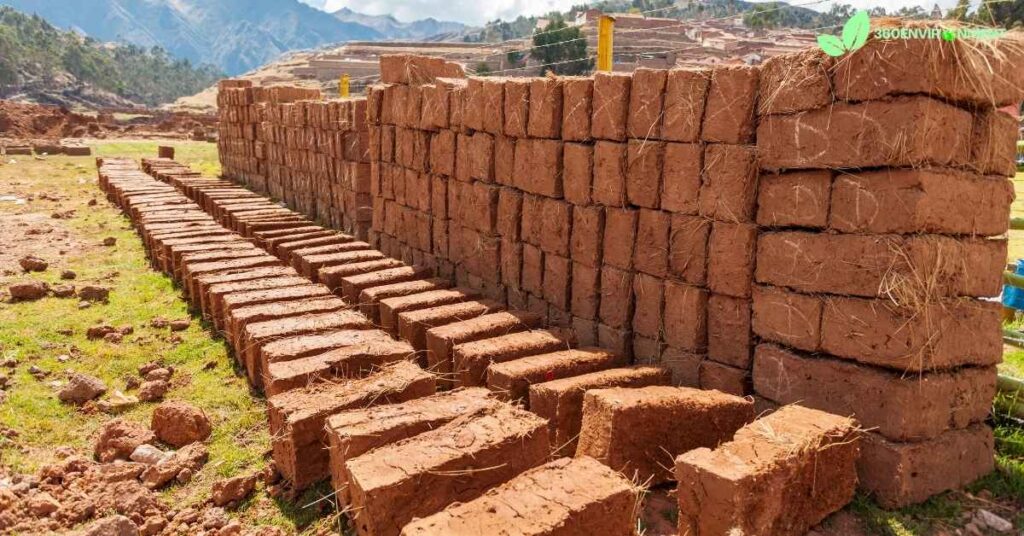
4.1. Residential Homes
Adobe clay is commonly used in the construction of residential homes, particularly in arid or semi-arid climates. In places like New Mexico and Arizona, adobe homes are a staple of the architectural landscape. The thick adobe walls provide excellent insulation, keeping homes cool during the day and warm at night, making them ideal for desert environments.
Modern adobe homes often incorporate other sustainable technologies, such as solar panels and rainwater harvesting systems, to create off-grid or low-energy homes. The natural beauty of adobe, with its earthy tones and textured surfaces, also appeals to those looking for an organic and aesthetically pleasing design.
4.2. Public Buildings and Community Spaces
In many developing countries, adobe clay is still used to construct public buildings such as schools, community centers, and health clinics. The affordability and accessibility of the material make it an ideal choice for regions with limited economic resources. Furthermore, adobe’s ability to regulate indoor temperatures can reduce the need for air conditioning or heating, lowering the operational costs of these buildings.
Some modern architects are using adobe in innovative ways to create public spaces that reflect the cultural heritage of a region while incorporating contemporary design elements. Adobe amphitheaters, galleries, and performance spaces can blend traditional materials with modern functionality, creating spaces that are both sustainable and culturally significant.
4.3. Earthquake-Resistant Adobe Buildings
One of the main criticisms of adobe construction is its vulnerability to earthquakes. However, modern advancements in adobe construction techniques have addressed this issue. Engineers and architects have developed methods to make earthquake-resistant adobe buildings, which involve reinforcing adobe walls with materials like steel, wood, or bamboo. Additionally, using specific shapes and structural elements that distribute seismic forces can prevent the collapse of adobe structures during an earthquake.
Research has shown that adding horizontal and vertical reinforcements within adobe walls, as well as incorporating flexible building joints, can significantly improve the resilience of these structures in earthquake-prone regions. Projects in countries like Peru and Nepal, where adobe is traditionally used, have implemented these improvements to ensure that adobe remains a safe and viable option for construction even in seismically active areas.
These advancements not only extend the longevity of adobe buildings but also demonstrate that adobe clay can be part of resilient, sustainable architecture, suitable for a wide range of environments, even those with natural hazards.
5. Challenges of Adobe Clay in Modern Construction
Despite its numerous benefits, adobe clay is not without its challenges. Several factors need to be considered when using adobe in modern construction, particularly in climates that are not naturally suited to this material.
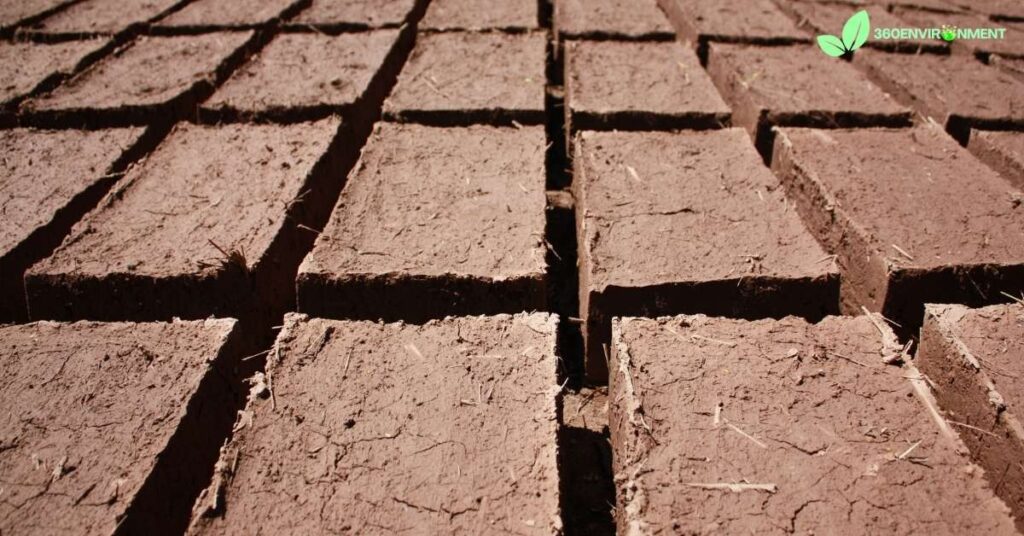
5.1. Vulnerability to Moisture
One of the primary weaknesses of adobe clay is its vulnerability to moisture. Adobe structures can be damaged by prolonged exposure to rain, humidity, or flooding. The clay and sand mixture can dissolve or crumble when exposed to water, weakening the structure over time. In regions with heavy rainfall or high humidity, adobe buildings may require frequent maintenance or additional protective layers to prevent water damage.
Modern adobe builders address this issue by applying protective coatings or finishes to the exterior walls. Lime plaster, stucco, or other water-resistant materials are often used to seal the adobe surface and protect it from moisture. Additionally, incorporating large roof overhangs or drainage systems can help divert rainwater away from the walls, further reducing the risk of water damage.
5.2. Limitations in Cold Climates
While adobe performs exceptionally well in hot, dry climates due to its thermal mass properties, it is less effective in colder, wetter regions. Adobe’s ability to retain heat works well in environments with fluctuating temperatures, but in consistently cold climates, the material’s thermal properties are less beneficial. In these areas, supplementary insulation may be required to maintain comfortable indoor temperatures.
For this reason, adobe clay is less commonly used in colder parts of the world, although it can still be incorporated into hybrid building designs that combine adobe with other materials, such as wood or stone, to create better insulation.
5.3. Building Codes and Regulations
Another challenge to using adobe clay in modern construction is the need to comply with contemporary building codes and regulations. In many regions, building codes are designed with industrial materials like concrete, steel, and timber in mind. As a result, builders who wish to use adobe may face regulatory hurdles or may need to modify their designs to meet structural and safety standards.
Fortunately, some regions, particularly in the southwestern United States and parts of Latin America, have developed specific building codes for adobe structures, allowing them to be safely integrated into modern construction. However, further efforts are needed to promote the inclusion of adobe as a legitimate and sustainable building material within international building standards.
6. The Future of Adobe Clay in Sustainable Architecture
As sustainability becomes a central concern in architecture and urban planning, adobe clay is likely to play an increasingly important role in the future of green building. Its eco-friendly properties, combined with advancements in construction techniques, make it an attractive option for builders and architects looking to reduce the environmental impact of their projects.

6.1. Integrating Adobe with Modern Design
Many architects are exploring ways to blend traditional materials like adobe with modern architectural design. By incorporating adobe into contemporary structures, builders can create homes and buildings that are not only environmentally sustainable but also visually striking. Adobe’s natural textures and colors provide a warm, organic aesthetic that can be integrated into minimalist or modern designs.
Some forward-thinking architects are experimenting with combining adobe with other green building materials, such as recycled steel, bamboo, or rammed earth, to create hybrid designs that offer the best of both worlds: the sustainability of adobe and the structural advantages of modern materials.
6.2. Urban Applications of Adobe
Historically, adobe clay has been used in rural or suburban settings where land is abundant, and building codes are less restrictive. However, there is growing interest in using adobe for urban applications as part of sustainable development initiatives. Urban planners and architects are beginning to incorporate adobe into urban projects, including low-cost housing, community centers, and mixed-use buildings.
By using adobe in urban environments, cities can reduce their reliance on high-energy materials like concrete and steel, while also lowering carbon emissions associated with construction. In places like Mexico City, Lima, and parts of India, adobe buildings are emerging as a solution to the affordable housing crisis, providing a low-cost, environmentally friendly alternative to traditional construction methods.
6.3. Education and Advocacy
The future success of adobe clay as a mainstream building material will depend, in part, on increased education and advocacy. Many builders, architects, and developers are unfamiliar with the benefits of adobe or see it as a relic of the past. Efforts to educate construction professionals and the public about the advantages of adobe, as well as the technical improvements that have been made in recent years, are crucial to expanding its use.
Organizations that promote sustainable architecture, such as the US Green Building Council (USGBC) and World Green Building Council, are already incorporating adobe into their frameworks for green building certification. Workshops, courses, and demonstrations that teach adobe building techniques are helping to spread awareness and ensure that this ancient material remains relevant in the modern world.
7. Conclusion: Adobe Clay as a Path to Sustainable Construction
Adobe clay has stood the test of time as a reliable and sustainable building material. From ancient civilizations to modern eco-conscious builders, adobe continues to offer a low-impact, energy-efficient solution for creating homes and structures that blend harmoniously with the natural environment.
As the world faces the challenges of climate change and resource depletion, materials like adobe clay provide a viable alternative to traditional construction methods that are often energy-intensive and polluting. By relying on locally sourced, biodegradable materials, adobe reduces the environmental footprint of construction while also creating energy-efficient buildings that can withstand the elements.
However, for adobe clay to become a more prominent feature of modern construction, it must overcome challenges related to moisture vulnerability, cold climates, and building code restrictions. Fortunately, advancements in construction techniques, combined with growing interest in sustainable architecture, suggest that adobe will continue to be a valuable building material in the years to come.
Whether used for residential homes, public buildings, or urban developments, adobe clay offers a path to more sustainable, environmentally friendly construction that honors both tradition and innovation.FAQs
- What is adobe clay made of? Adobe clay is a mixture of clay, sand, water, and sometimes organic materials like straw or grass, which is molded and dried to form building bricks or walls.
- Why is adobe considered environmentally friendly? Adobe is sustainable because it is made from natural, locally sourced materials, requires no industrial processing, and is biodegradable and recyclable.
- Can adobe clay be used in modern construction? Yes, adobe clay can be used in modern construction, especially in eco-friendly projects. It offers excellent thermal insulation and low environmental impact.
- What are the disadvantages of adobe clay? Adobe is vulnerable to moisture and may require additional insulation in cold climates. It also faces challenges in meeting modern building codes.
- How does adobe clay regulate indoor temperatures? Adobe has high thermal mass, meaning it absorbs heat during the day and releases it at night, helping to maintain stable indoor temperatures without artificial heating or cooling.
- Is adobe clay a cost-effective building material? Adobe can be cost-effective due to the low cost of materials and reduced energy needs. However, labor and maintenance costs may vary depending on the region and climate.
Read More: The Desert Threat Years: Environmental Challenges and Global Impact

